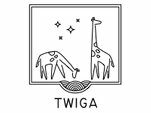Numerical Weather Prediction Models (NWPM) can significantly benefit from the ingestion of SAR-derived products like water vapor maps. In particular, the contribution of SAR data to NWPM forecasts can be very effective if two conditions are satisfied: the estimated water vapor maps must be ‘dense’ and they must cover wide areas.
Water vapor maps are obtained by SAR Interferometry. This technique compares two or more SAR images acquired in the same area at different times and provides a map of the changes occurred between the acquisitions. The registered changes are the sum of two main contributions: the variation of atmospheric conditions, mostly due to atmospheric water vapor, and the variation (in terms of geometrical structure, chemistry, elevation, etc.) of targets at the ground.
If the targets remain stable between the acquisitions, the map of changes provides a highly reliable estimation of the water vapor only. Therefore, the ideal condition for water vapor maps retrieval is when everything on the ground does not change.
The standard method to estimate water vapor maps exploits the so-called Permanent Scatterers, i.e. targets such as rocks or buildings which are, by definition, temporally stable. The drawback of this approach is that Permanent Scatterers density is usually low in rural areas, thus the final water vapor product is not a dense map but a local, point-wise estimation. This problem has been overcome by TWIGA researchers through the implementation of a technique able to extract dense maps by exploiting both Permanent Scatterers and Distributed Scatterers.
As mentioned above, the other important requirement to obtain reliable SAR products for NWPM is the wideness of the map: in fact, products must be of several hundred, if not thousands, of kilometers. Sentinel-1 is the perfect instrument in this sense: a single SAR image is more than 250km wide, thus the merging of frames allows the generation of a unique long strip.
Moreover, the use of large-scale water vapor maps implies further processing aimed to remove the contribution due to the variations in the ionosphere; in fact, the ionosphere generates a disturbance in water vapor estimation. This sort of noise is usually negligible at small-scale but cannot be neglected when the final objective is to generate large-scale atmospheric maps. A ionospheric-correction algorithm has been implemented by TWIGA researchers, and experiments are currently ongoing.

Edited by Monia Molinari and Marco Manzoni
POLIMI

